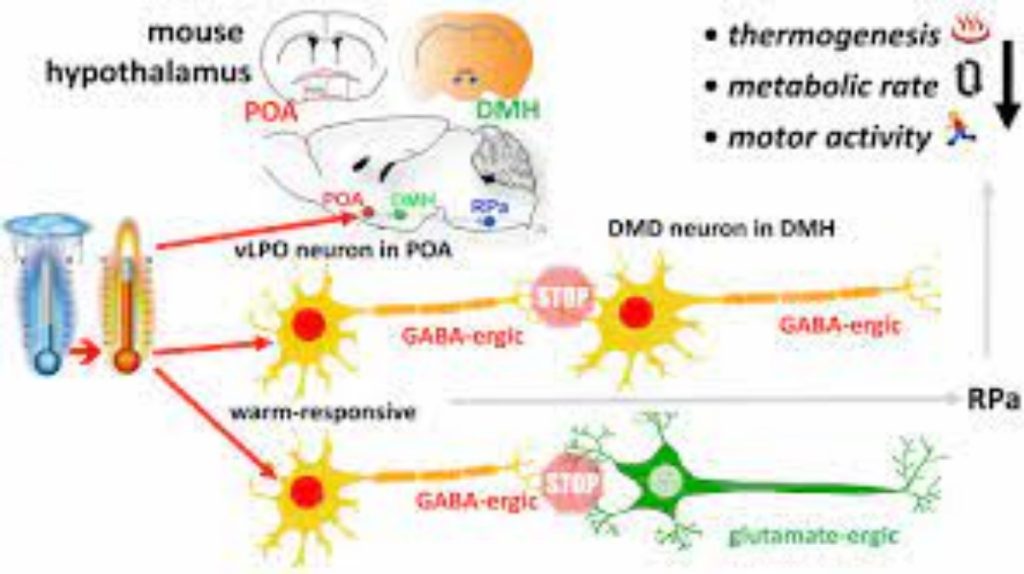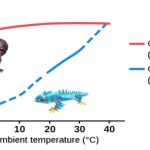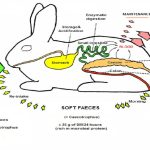The nervous system is important to thermoregulation, as illustrated in Figure 14.23. The processes of homeostasis and temperature control are centered in the hypothalamus of the advanced animal brain.

Figure 14.23. The body is able to regulate temperature in response to signals from the nervous system.
When bacteria are destroyed by leuckocytes, pyrogens are released into the blood. Pyrogens reset the body’s thermostat to a higher temperature, resulting in fever. How might pyrogens cause the body temperature to rise?
The hypothalamus maintains the set point for body temperature through reflexes that cause vasodilation and sweating when the body is too warm, or vasoconstriction and shivering when the body is too cold. It responds to chemicals from the body. When a bacterium is destroyed by phagocytic leukocytes, chemicals called endogenous pyrogens are released into the blood. These pyrogens circulate to the hypothalamus and reset the thermostat. This allows the body’s temperature to increase in what is commonly called a fever. An increase in body temperature causes iron to be conserved, which reduces a nutrient needed by bacteria. An increase in body heat also increases the activity of the animal’s enzymes and protective cells while inhibiting the enzymes and activity of the invading microorganisms. Finally, heat itself may also kill the pathogen. A fever that was once thought to be a complication of an infection is now understood to be a normal defense mechanism.


